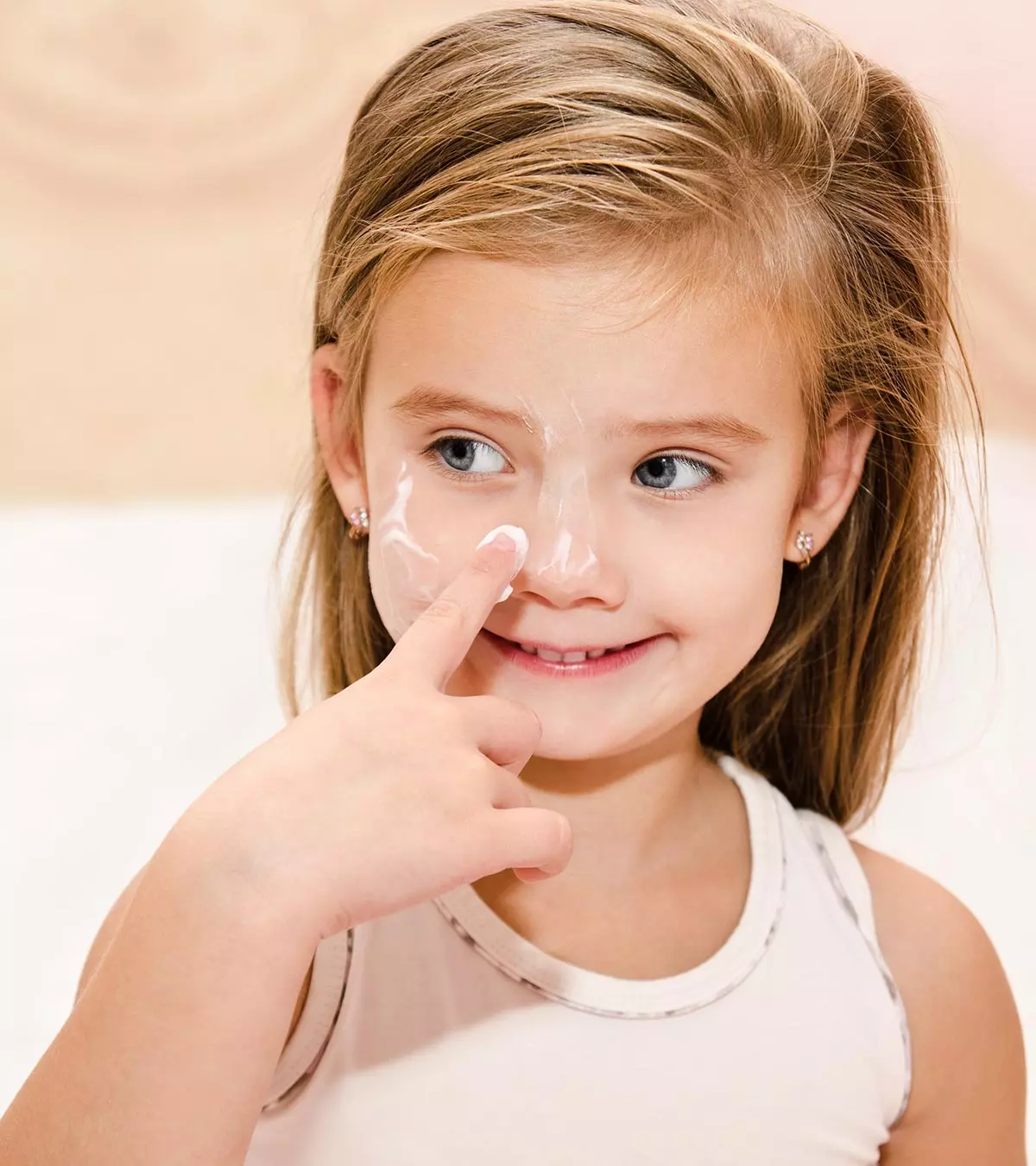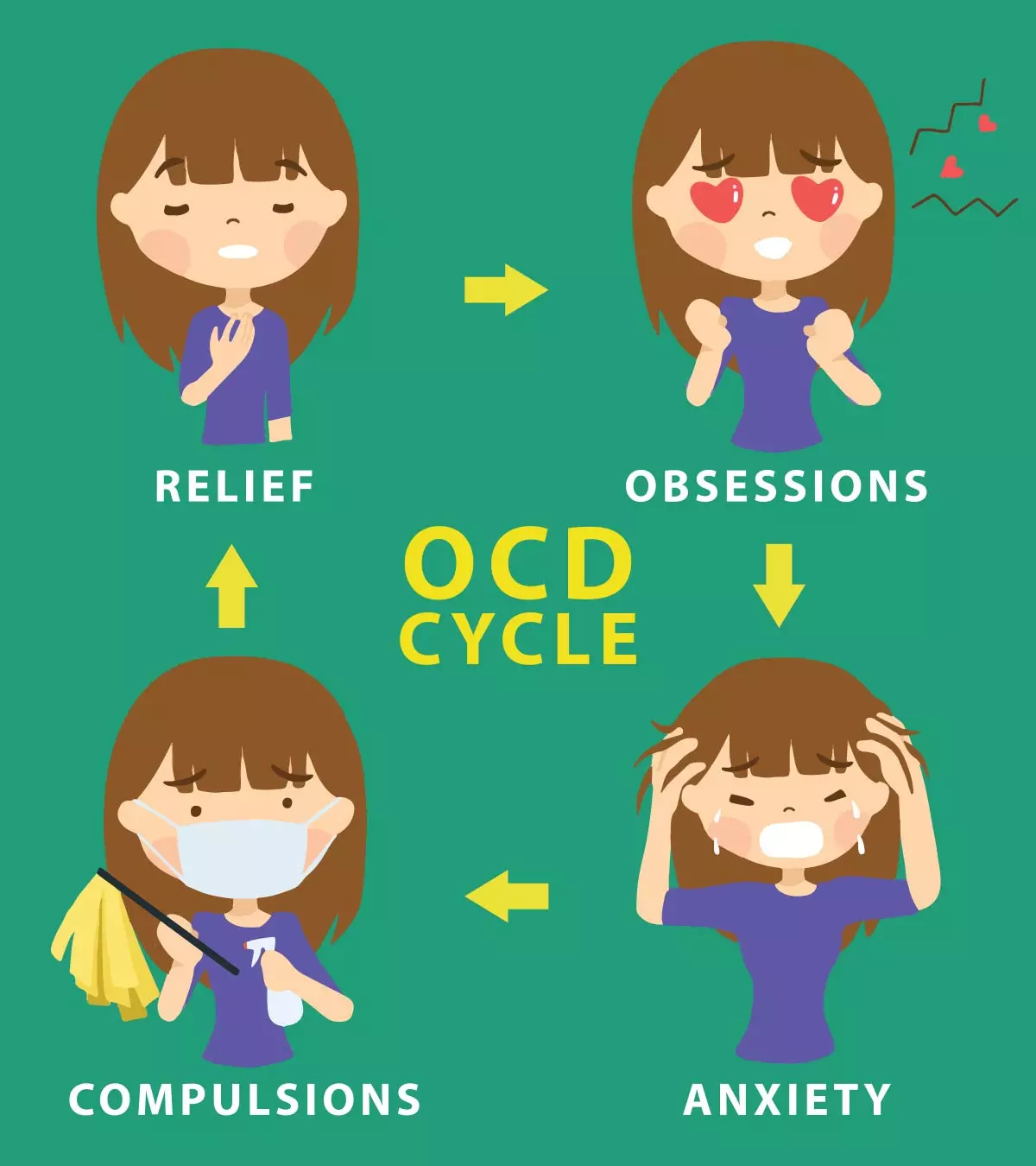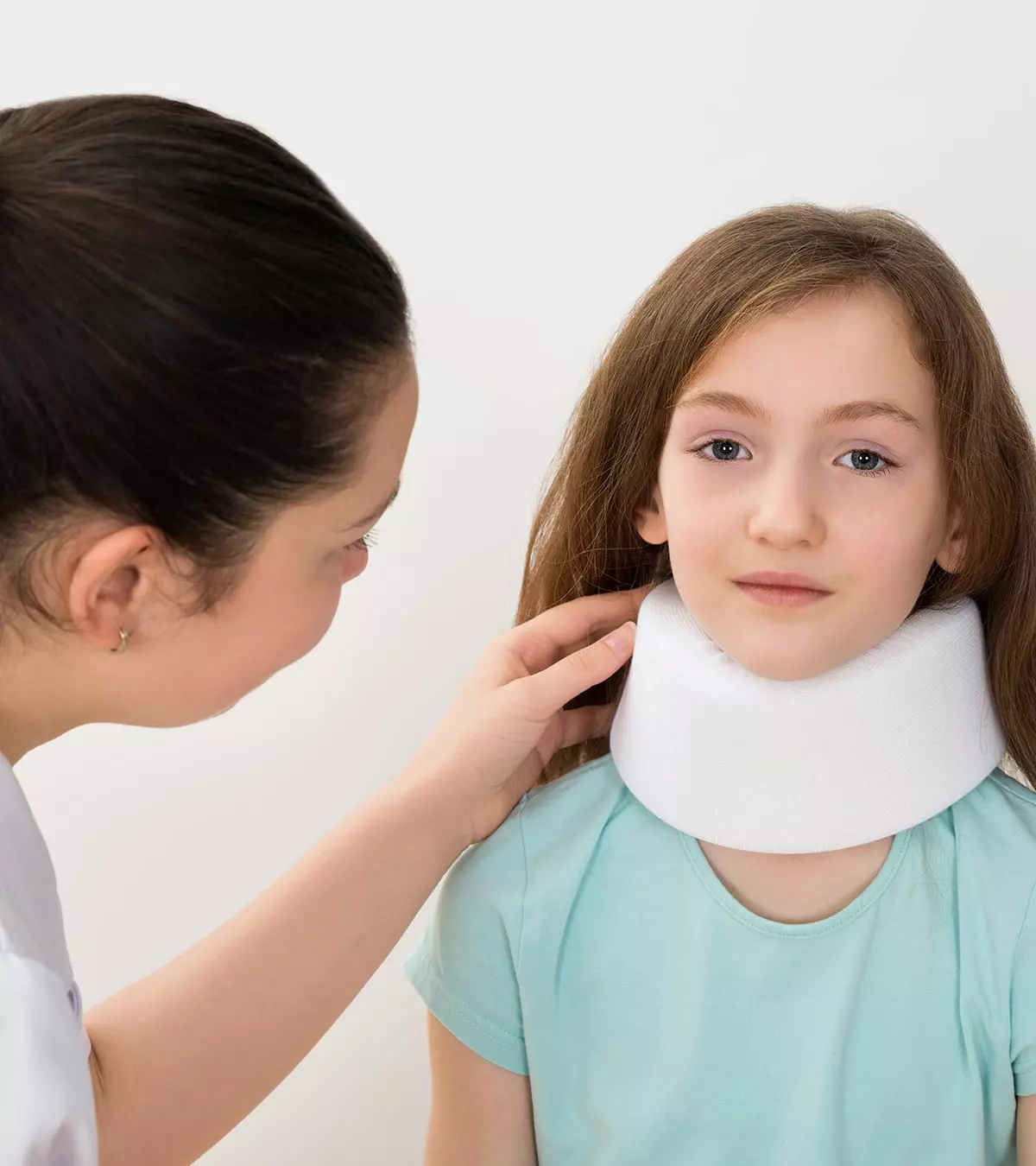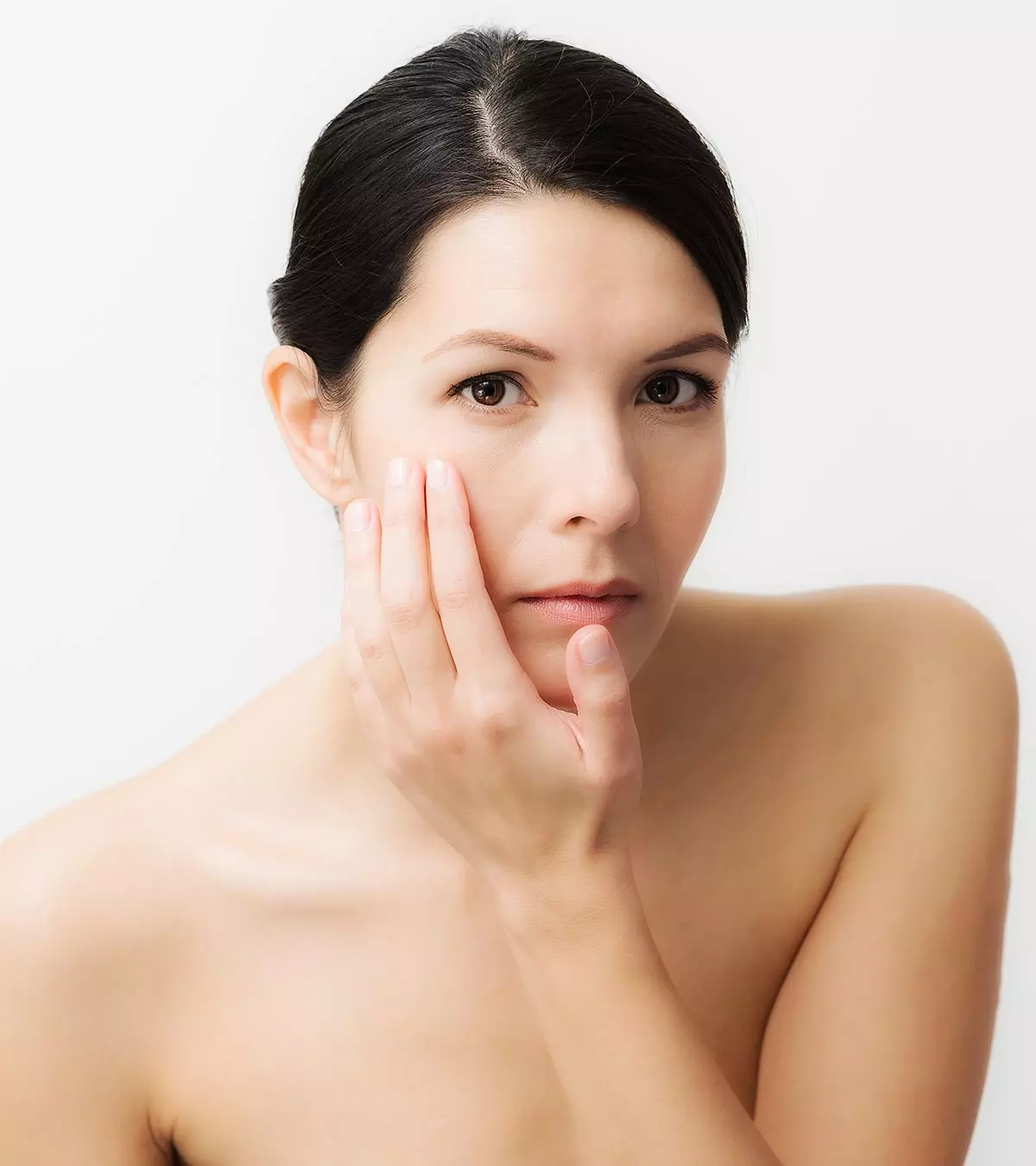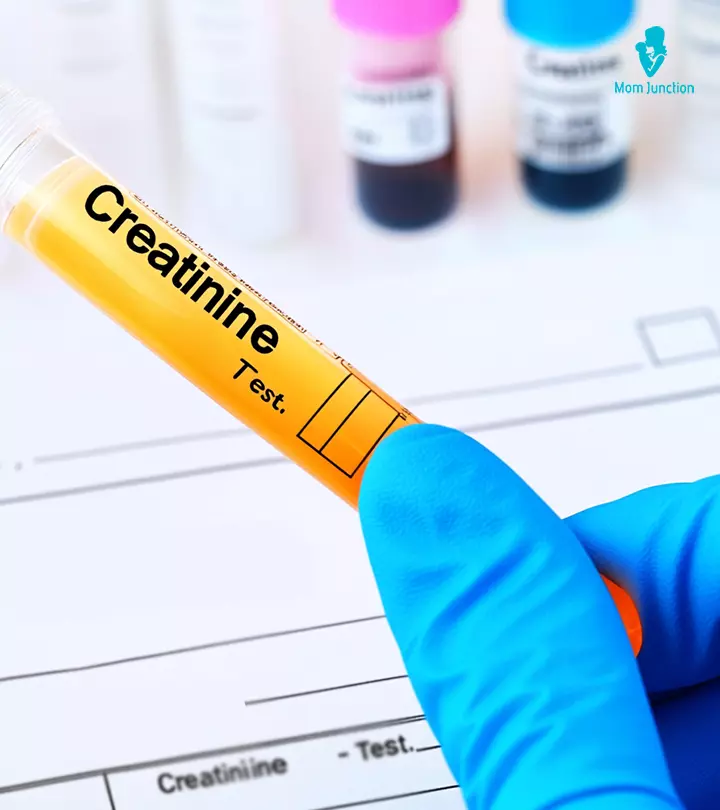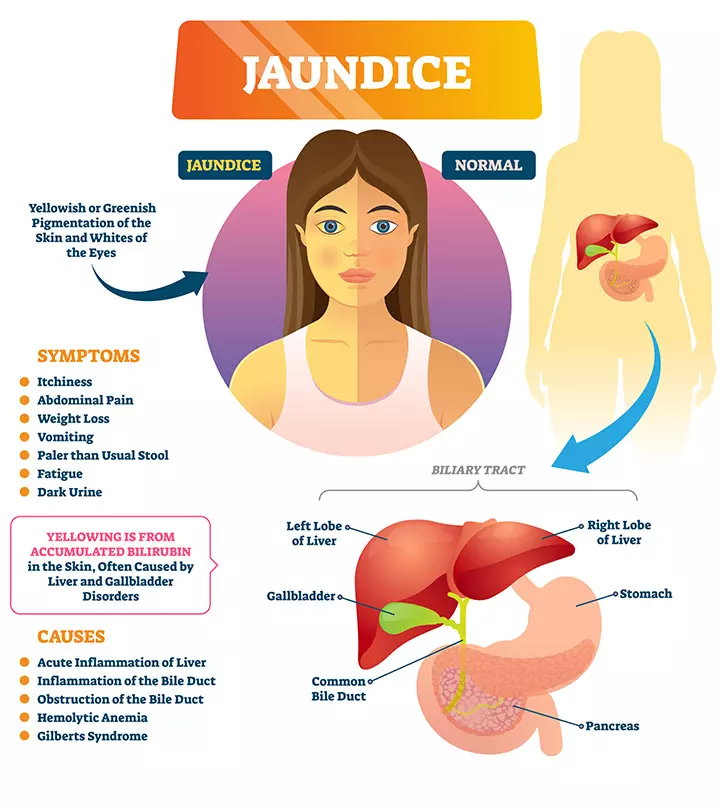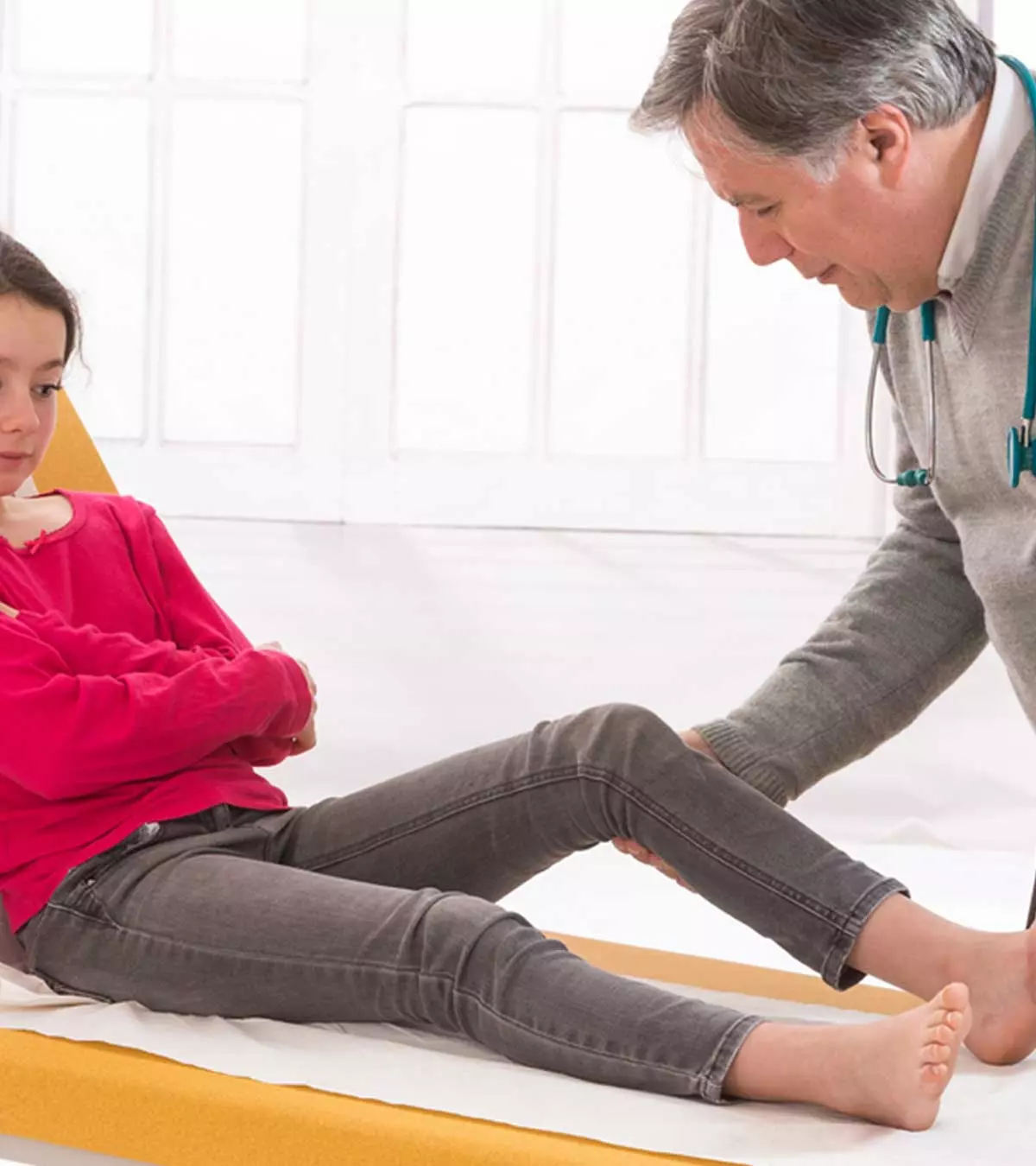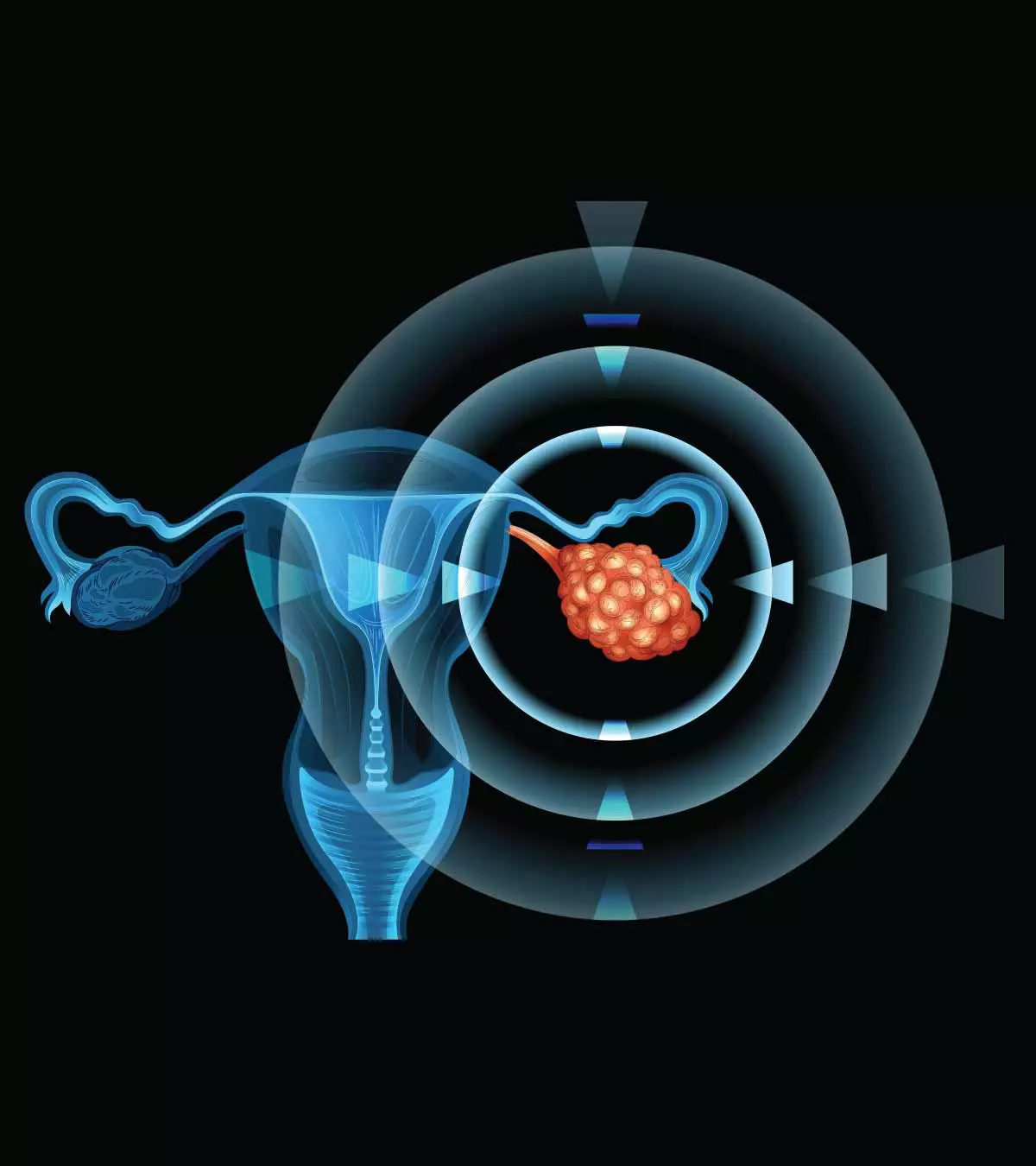
Image: Shutterstock
A poison ivy rash in children is an allergic reaction to the poison ivy plant. Your child may develop a skin rash within 24 to 72 hours of exposure to this plant. They may experience itching and redness initially, but in severe cases, patches of fluid-filled blisters may appear on the affected site.

Most children allergic to this plant have severe reactions in the first week of contact. However, the rash might last for up to three weeks in some. If the rash spreads widely or causes severe symptoms, seeing a doctor for proper treatment is essential.
Read this post to learn more about the symptoms, treatment, and home remedies for poison ivy itching in children.
Key Pointers
- The poison ivy is easily recognizable due to its trifoliate structure and airborne hair-like roots.
- The oil from the plant can cause an allergic reaction in children if they come into contact with any part of the plant.
- They may develop symptoms such as blisters, itchiness, and redness.
- Home remedies such as aloe vera gel and oatmeal can help manage the condition.
- Severe symptoms such as breathing difficulty, swollen eyelids, and persistent rash require medical attention.
What Does A Poison Ivy Plant Look Like?

Poison ivy is found in many parts of the US and is said to be one of the leading causes of contact dermatitis. The plant grows like a vine or as a shrub along the ground or by climbing other plants. It does not grow in Alaska, Hawaii, and some parts of the western US (1). However, children may encounter poison ivy plants in school or other outdoor environments. To minimize the potential risks of outdoor exposure, implementing boundaries and promptly removing poisonous plants can be beneficial preventive measures.
The US Centers for Disease Control and Prevention (US CDC) recommends recalling the saying, ‘Leaves of three, let it be!’ to identify poison ivy (13). While some species may have more than three leaves, poison ivy usually has distinctive trifoliate leaves, each with three leaflets and each leaflet with a serrated edge. The leaf surface is smooth and turns red during fall while staying green in other seasons. Poison ivy produces green or off-white fruits during fall. This plant also develops thin, hair-like aerial roots, which may help identify it. It is risky to touch any part of the plant in any season.
Poison oak and sumak may produce similar allergic skin reactions.
Why Does Poison Ivy Cause A Rash?
The allergic reaction is due to an oil called urushiol that is found throughout the plant. If the skin comes in contact with any part of the plant, leaves, stem, or the sap oozing from a broken twig, the urushiol is absorbed into the child’s skin. The immune system detects the oil and mounts a response that leads to an allergic reaction, which is known as urushiol-induced contact dermatitis.
The symptoms and time taken for a rash to appear could vary among children depending on several factors, including a child’s sensitivity towards poison ivy and the amount of urushiol absorbed. Usually, the first symptoms appear within 24 to 48 hours after contact with poison ivy (2).
Is Poison Ivy Rash Contagious?
No, poison ivy rash cannot spread from one person to another. The rash only appears on the skin that came in contact with urushiol. The fluid from broken blisters or rashes does not spread the rash to other parts of the body (1).
However, there are other ways through which the allergic skin reaction can spread.
- If the child does not wash hands after touching poison ivy and touches other parts of the body, then the oil might spread and cause a reaction.
- If your pet comes in contact with the poison ivy plant, and the child touches the pet, then the child might be exposed to the oil and get an allergic reaction.
- Contaminated clothes, shoes, or other objects that come in contact with the plant can spread the oil to the rest of the body and other people.
 Point to consider
Point to considerSigns And Symptoms Of Poison Ivy Rash On Children
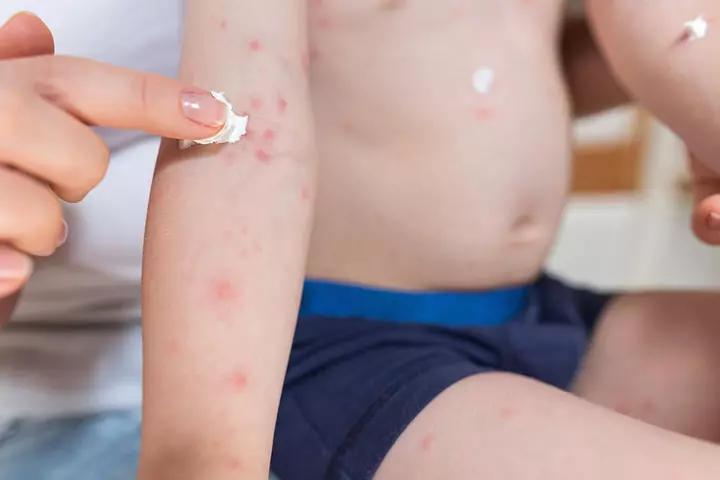
If you suspect a poison ivy rash on your child’s skin, then look for these symptoms.
- Redness and swelling of the exposed area
- Severe itching
- Small bumps that turn into blisters
- Fluid-filled blisters in multiple streak-like arrangements
- Eruption of blisters
In a week or two, the blisters would crust over and fall. In mild and medium cases, this allergic reaction can be treated with over-the-counter (OTC) creams to ease the swelling and itching.
When To Take Your Child To The Doctor?
According to the National Institutes of Health (NIH), poison ivy rashes in children are usually not serious and can often be treated at home. However, if you notice any of the following signs in your child, it’s important to seek medical attention right away (3):
- Shortness of breath
- Difficulty swallowing
- One or both the eyelids swell shut
- Itch all over the body and nothing seems to make it better
- Rash on the face, eyes, genitals, or other parts of the body
- Severe itching that keeps the child up at night
- Pus oozing from a blister
- Soft yellow scabs
- Body temperature more than 100°F (37.7°C)
- Rashes lasting more than three weeks
 Quick fact
Quick fact- Rashes lasting more than three weeks
The severe symptoms of the allergy in children are usually seen four to seven days after exposure to urushiol.
The doctor or pediatric dermatologist may conduct a physical examination to diagnose the plant-induced rash. They may also inquire about any additional symptoms and your child’s medical history.
Treatment For Poison Ivy Rash
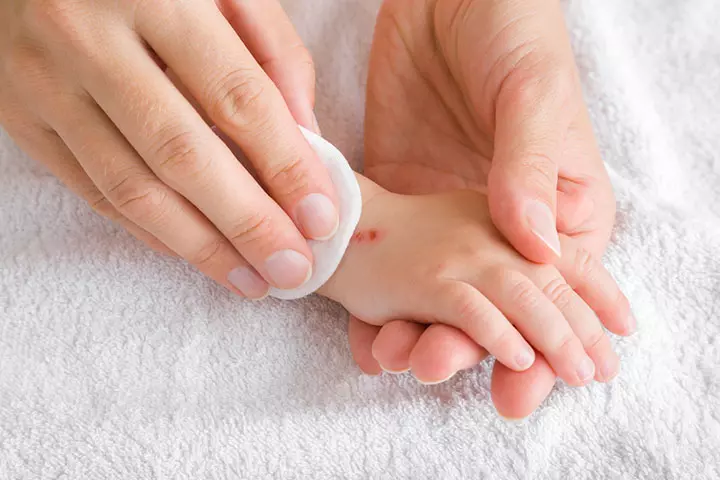
Once your child comes in contact with the allergy-causing oil, it will start to penetrate the skin rapidly, so care should be taken to remove it from the skin, ideally within ten minutes (2).
For mild cases:
- Wash the affected area thoroughly with a mild soap.
- Remove your child’s clothes and shoes and carefully wash them thoroughly to prevent the spreading of the infection from any remains of the oil.
- Apply a cold compress on the affected area to soothe the itching and swelling.
- Apply calamine lotion or a corticosteroid cream to ease the itching. Calamine will provide immediate relief though short-lasting while corticosteroid will provide longer-lasting relief. Corticosteroid is not to be applied more than four times in a day, while calamine can be applied as many times as required.
- Use over-the-counter creams or lotions like calcium acetate to minimize oozing from the rash.
- Instruct your child not to scratch or pinch the rashes and blisters.
- Apply colloidal oatmeal and soak the affected area in a cool bath to alleviate itchiness.
For severe cases:
- Seek medical help if the rash causes intense swelling, spreads widely, or affects the genitals.
- For intense discomfort, antihistamines like diphenhydramine (Benadryl) may induce sleepiness and help the children take their minds off itching.
 Quick tip
Quick tip- Do not use any antiseptic (Soframycin) or anesthetic (Benzocaine) creams that have not been prescribed by a doctor.
- Your child’s doctor may prescribe corticosteroid creams or other ointments specifically meant for urushiol-induced contact dermatitis.
- Other medicines may be prescribed depending on the severity of the rash and the presence of other symptoms.
- Oral corticosteroids may be required for a severe rash. Infected blisters may require treatment with oral antibiotics. But these decisions can be taken only by a doctor.
Your child’s doctor may prescribe corticosteroid creams or other ointments specifically meant for urushiol-induced contact dermatitis. Other medicines may be prescribed depending on the severity of the rash and presence of other symptoms. Oral corticosteroids may be required for a severe rash. Infected blisters may require treatment with oral antibiotics. But these decisions can be taken only by a doctor.
Home Remedies For Poison Ivy Rash

Along with the OTC medications, you can follow some safe home remedies to soothe the itching. However, do note that these remedies are based on anecdotal evidence. Therefore, it is advised to try them after consulting a doctor.
- Aloe vera gel: Extract fresh aloe vera gel and apply it on the rashes, let it remain for ten minutes (6). Its anti-inflammatory and antiseptic properties are said to help.
- Oatmeal: Giving frequent baths with colloidal oatmeal may relieve the symptoms of poison ivy rashes (2).
- Menthol: Studies suggest that menthol in the concentration of 1 to 3% could relieve itching (5).
- Apple cider vinegar: It has been anecdotally used as a treatment for poison ivy symptoms. Dilute a few drops of apple cider vinegar in water and apply it on the rashes. Leave it for ten minutes, and rinse with water (7).
If any of the home remedies cause pain, discomfort, or intensify the itching, stop using them immediately. If your child has a history of allergies, avoid home remedies and see a doctor.
Vera-Marie Landi recalls her first encounter with poison ivy during her childhood. Sharing her symptoms, she says, “I had signs of itching on my face, upper body, and legs. By morning, my face had swelled up like a balloon… I say itchy, but it was a burning itch that I needed to scratch despite hurting when I did.
“My parents could only afford Calamine Lotion, the “go-to” in our medicine cabinet for almost anything skin-related… I smeared the pink, soothing lotion all over the red, itchy patches and some on my face, avoiding my eyes. However, the relief was temporary, and I finished the entire bottle on the first day.
“Then we drove to the beach; that water felt so good! As soon as I hit the salt water, the itching stopped. It was soothing and relieved me for the first time in what seemed like an eternity. Even as I stepped out of the water, I could feel tightness and smoothness in my poor, aching, swollen skin. I remained itch-free the rest of the day and into the night. Most of my skin had dried out the next morning, and the redness had gone away (i).”
Prevention Of Poison Ivy Reaction
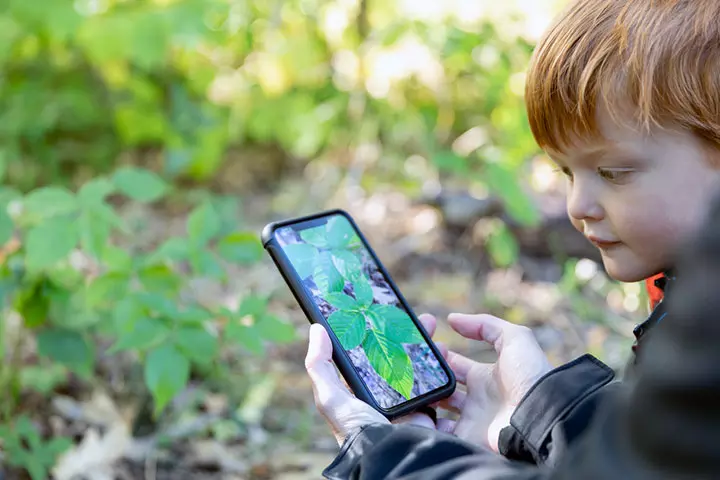
The best way to prevent poison ivy rash is to avoid contact with the plant. The following preventive tips can be helpful.
- Teach your child how to identify poison ivy and explain its dangers.
- Always dress your child in long-sleeved shirts and full pants while venturing out into the woods.
- Wash clothing and trekking gear with mild soap after a trip to the woods.
- If you suspect your pet might have come in contact with the plant, do not touch them with bare hands and shower them as soon as you get home.
- Take care not to burn suspicious plants in your garden as the smoke from a poison ivy plant can also cause an allergic reaction.
- Apply ivy block creams containing the compound Bentoquatam 15 minutes before possible contact with the plant. Lotions with Bentoquatam are available over-the-counter. Consult a doctor before using it in children younger than six years of age (8). Do not apply Bentoquatam to poison ivy rashes since it does not cure existing allergic reactions.
 Quick tip
Quick tipFrequently Asked Questions
1. Is hydrogen peroxide good for the treatment of poison ivy rash?
Hydrogen peroxide has been historically used as an antiseptic to treat wounds. However, sufficient data is unavailable to establish its effectiveness and safety for treating poison ivy rashes (9).
2. Should I cover a poison ivy rash or let it breathe for better recovery?
Children often tend to scratch their rashes; therefore, you may cover their blisters at night to prevent them from scratching and getting infections (10).
3. Can I use Caladryl on children?
No, you should not use Caladryl lotion for children as it gets absorbed through their skin. It is ideal to use calamine lotion (10).
Poison ivy rash on children occurs when they are exposed to playgrounds and other outdoor spaces surrounded by plants and trees. Therefore, you must educate your child about the poison ivy plant, its appearance, and ways to identify it. You may also avoid areas where this plant might be present. OTC medications are usually prescribed to decrease the severity of the rashes. Still, in case of severe inflammation and itching, it is advised to consult a doctor or a skin specialist for proper diagnosis and treatment measures.
Infographic: Clearing The Doubts About Poison Ivy
Poison ivy exposure is quite common, yet certain myths surround it. Some of them can have harmful consequences if followed as facts. Go through the infographic below to learn the myths and facts about poison ivy to prevent exposure better.
Some thing wrong with infographic shortcode. please verify shortcode syntax
Illustration: Poison Ivy Rash On Children: Symptoms And Treatment

Image: Stable Diffusion/MomJunction Design Team
Personal Experience: Source
MomJunction articles include first-hand experiences to provide you with better insights through real-life narratives. Here are the sources of personal accounts referenced in this article.
i. Poison Ivy’s burning itch and a remedy that finally worked;https://medium.com/illumination/worst-case-of-poison-ivy-and-finally-finding-a-remedy-that-worked-35db46cc3cde
References
1. Outsmarting Poison Ivy and Other Poisonous Plants; U.S. Food & Drug Administration
2. Nancy P Lee, Edgar R Arriola; Poison Ivy, Oak and Sumac Dermatitis; Drug Information Center; UCLA Medical Center
3. Poison ivy – oak – sumac rash; U.S. National Library of Medicine
4. Babar Ali, et. al.; Essential oils used in aromatherapy: A systemic review; Asian Pacific Journal Of Tropical Biomedicine
5. Sarina B. Elmariah, and Ethan A. Lerner; Topical Therapies for Pruritus; NCBI
6. Oliver Grundmann; Aloe Vera Gel Research Review; Natural Medicine Journal
7. Carol S. Johnson, and Cindy A. Gaas; Vinegar: Medicinal Uses and Antiglycemic Effect; NCBI
8. Bentoquatam Topical; U.S. National Library of Medicine
9. Safety Assessment of Hydrogen Peroxide as Used in Cosmetics; Cosmetic Ingredient Review
10. Poison Ivy, Poison Oak and Poison Sumac: Treatment and Prevention; Nationwide Children’s
11. Poison Ivy Rash in Children; Johns Hopkins Medicine
12. Poison Ivy; St. Louis Children’s Hospital
13. Poisonous Plants and Work; Centers for Disease Control and Prevention
Community Experiences
Join the conversation and become a part of our nurturing community! Share your stories, experiences, and insights to connect with fellow parents.
Read full bio of Dr. Pooja Parikh
Read full bio of Dr. Ritika Shah
Read full bio of Swati Patwal
Read full bio of Ghazia Shah







